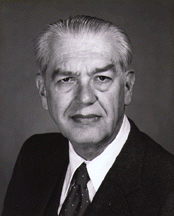
June 5, 1916 – July 3, 2003
American Educational Psychologist
Influences
- Student of: Goodenough , Skinner
- Influenced by: L. Thurstone
- Students:
- Influenced: Lubinski , Benbow, Susan Embretson
- Time Period: Contemporary Explorations
Education
- Wesleyan University , A.B. with highest honors in Classics (1937)
- University of Michigan, Linguistic Institute (summer, 1937)
- University of Chicago , psychometric study under Thurstone (summer, 1940)
- University of Minnesota , Ph.D. in General Psychology (1941)
Career
- Mount Holyoke College , Instructor in Psychology and Education (1940-1942)
- Indiana University , Instructor in Psychology (1942-1943)
- University of Chicago , Lecturer in Psychology (1943-1944)
- U.S. Navy Aviation Psychologist (1944-1946)
- Research Psychologist for the Department of the Army (1946-1949)
- Harvard University , Assistant Professor and Roy . E. Larsen Professor or Education (1949-1967)
- Educational Testing Service, Senior Research Psychologist (1967-1974)
- University of North Carolina, Chapel Hill, William R. Kenan, Jr. Professor of Psychology and Director of the L.L. Thurstone Psychometric Laboratory (1974-1979)
- University of North Carolina , Chapel Hill Professor of Psychology, Emeritus (1982-2003).
Definition of Intelligence
“The three-stratum theory of cognitive abilities is an expansion and extension of previous theories. It specifies what kinds of individual differences in cognitive abilities exist and how those kinds of individual differences are related to one another.It proposes that there are a fairly large number of distinct individual differences in cognitive ability, and that the relationships among them can be derived by classifying them into three different strata: stratum I, ‘narrow’ abilities; stratum II, ‘broad abilities; and stratum III, consisting of a single ‘general’ ability (Carroll, 1997, p. 122)”
Major Contributions
- influential in the application of factor analysis to study cognitive abilities
- conducted seminal work in applied linguistics
Ideas and Interests
John Carroll is well-known for his seminal work, Human Cognitive Abilities: A Survey of Factor Analytic Studies (1993), in which he reanalyzed over 400 data sets of cognitive ability test scores. Based on his reanalyses, he proposed a Three-stratum Model of Human Cognitive Abilities.
- Stratum III — the general level; general intellectual ability, similar to g
- Stratum II — the broad level; eight factors, including fluid intelligence, crystallized intelligence, general memory and learning, broad visual perception, broad auditory perception, broad retrieval ability, broad cognitive speediness, and processing speed.
- Stratum I — the specific level; more specific factors grouped under the Stratum II factors.
However, Professor Carroll’s contributions go much further than this study. During his career, he has made significant contributions to linguistics and the teaching of foreign languages, educational psychology, and individual differences in cognitive abilities. For most of the 20th century, Carroll has conducted research in each of these areas, often on projects that involved more than one of his interest areas. The book by Lorin Anderson, listed below, is a good resource for information on Dr. Carroll’s career up to 1985. More current information can be found in the Encyclopedia of Human Intelligence (1994).
Selected Publications
Anderson , L.W. (Ed.) (1985). Perspectives on school learning: Selected writings of John B. Carroll. Hillsdale , NJ : Lawrence Erlbaum Associates.
Carroll, J.B. (1964). Language and thought. Englewood Cliffs, NJ: Prentice Hall.
Carroll, J.B. (1989). The Carroll model: A twenty-five year retrospective and prospective view. Educational Researcher, 18 (1), 26-31.
Carroll, J.B. (1993). Human cognitive abilities: A survey of factor-analytical studies. New York : Cambridge University Press.
Carroll, J.B. (1995). Reflections on Stephen Jay Gould’s The Mismeasure of Man (1981):
A retrospective review. Intelligence, 21, 121-134. Retrieved May 8, 2006, from http://www.mugu.com/cgi-bin/Upstream/Issues/psychology/IQ/carroll-gould.html .
References
Carroll, J. B. (1997a). Psychometrics, intelligence, and public perception. Intelligence, 24(1), 25-52.
Carroll, J.B. (1997b). The three-stratum theory of cognitive abilities. In D.P. Flanagan, J.L. Genshaft, & P.L. Harrison (Eds.), Contemporary intellectual assessment: Theories, tests, and issues (pp. 122-130). New York : The Guilford Press.
John B. Carroll (personal communication, June 27, 1998)
Jones, L.B. (1994) Carroll, John B. In R. J. Sternberg (Ed.) The encyclopedia of human intelligence. New York : Macmillan.
Image courtesy of John B. Carroll-UNC Photo Lab
